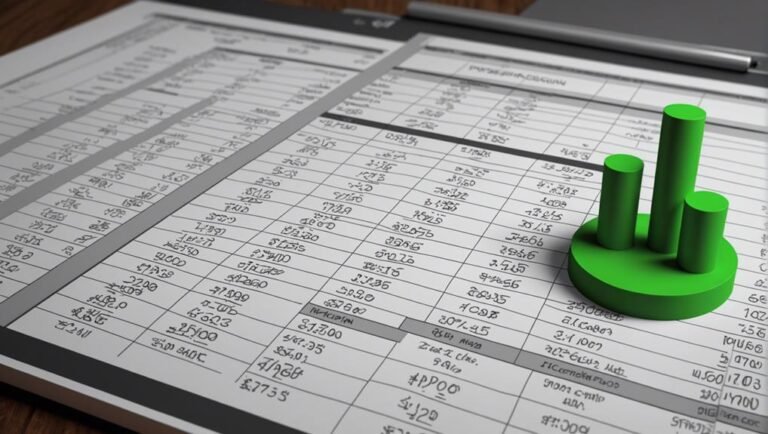Capital Expenditure (CapEx) Definition, Formula, and Examples
Capital Expenditure (CapEx) refers to allocating funds for acquiring and enhancing long-term physical assets to stimulate business growth and sustainability. It encompasses strategic decisions to boost operational efficiency, modernize facilities, and support future expansions. CapEx assets, like buildings, machinery, and computers, are essential for long-term value creation. Calculating CapEx involves analyzing financial statements, focusing on depreciation, and using investment evaluation techniques. Comparing CapEx with Operating Expenses (Opex) highlights tax implications and the impact on financial strategies. Understanding CapEx is pivotal for companies aiming to strengthen their market positions and drive sustainable growth.
Key Takeaways
- CapEx is crucial for acquiring, enhancing, and sustaining physical assets for business growth.
- It involves strategic allocation of financial resources to drive efficiency and competitiveness.
- CapEx assets include buildings, equipment, and machinery that support long-term value creation.
- Calculated by analyzing financial data, with depreciation being a key factor in the formula.
- Comparison with Operating Expenses (OpEx) aids in understanding tax implications and financial strategies.
Definition of Capital Expenditures
Capital Expenditures, commonly referred to as CapEx, represent the financial resources that companies allocate towards acquiring, enhancing, and sustaining physical assets critical to their operational infrastructure and growth strategies. The significance of CapEx lies in its role in facilitating business expansion, modernization, and competitiveness.
By investing in capital assets, companies can improve efficiency, increase production capacity, and support innovation. The benefits of Capital Expenditures include long-term value creation, enhanced operational capabilities, and the ability to generate higher returns in the future.
Ultimately, CapEx is crucial for companies looking to maintain a strong market position, drive sustainable growth, and adapt to changing industry landscapes effectively.
Purpose of CapEx
An essential aspect to contemplate regarding Capital Expenditures (CapEx) is the strategic allocation of financial resources towards acquiring and enhancing physical assets important for business operations and growth.
CapEx plays a significant role in driving increased efficiency within an organization by enabling strategic investments in infrastructure, equipment, technology, and other essential assets. By investing in CapEx, companies can modernize their operations, improve productivity, and position themselves for future expansion and competitiveness in the market.
These strategic investments not only enhance operational capabilities but also contribute to long-term sustainability and profitability. Hence, the purpose of CapEx goes beyond mere spending; it involves carefully planned decisions to propel the business towards achieving its growth objectives through prudent asset management and development.
Types of CapEx Assets
When considering the variety of assets encompassed by Capital Expenditures (CapEx), it is imperative to categorize them based on their strategic significance and long-term value to the business.
Asset classification plays an important role in investment analysis and strategic planning. Assets such as buildings, land, equipment, machinery, and computers fall under CapEx and are subject to depreciation over time. These investments are essential for expanding operational scope and enhancing future economic benefits.
Strategic planning involves identifying and prioritizing capital expenditures that align with the company's long-term goals. Understanding the depreciation of these assets is crucial for accurately evaluating their value and impact on the business's financial health.
Calculating CapEx
To determine the amount of capital expenditure (CapEx) a company incurs, it is essential to analyze the financial data from both the income statement and balance sheet.
- Understanding Depreciation: Depreciation is a key concept in calculating CapEx as it represents the allocation of the asset's cost over its useful life.
- Investment Analysis Techniques: Utilize investment analysis techniques to evaluate the impact of CapEx on the company's financial performance and future growth prospects.
- Financial Statement Data: Extract relevant information from the income statement and balance sheet to accurately calculate CapEx figures and assess the company's investment in fixed assets.
Capex Vs. Opex Comparison
Comparing capital expenditures (CapEx) to operating expenses (OpEx) provides valuable insights into a company's financial strategies and long-term asset management practices. Tax implications play a significant role in this comparison. While operating expenses are fully tax-deductible in the year they occur, CapEx reduces taxes over time through depreciation.
Funding sources also differ between the two. OpEx is typically funded from revenue generated in the current period, whereas CapEx often requires financing through sources like loans or retained earnings. Understanding the distinction between CapEx and OpEx is essential for financial planning and decision-making, as it impacts cash flow, profitability, and tax obligations.
Properly balancing these expenses is necessary for sustainable business growth and financial health.
Conclusion
To sum up, Capital Expenditures (CapEx) serve as the cornerstone of financial strategy, driving growth and sustainability in businesses.
As the adage goes, 'Invest in the future to secure success.'
By carefully calculating and allocating resources towards acquiring and enhancing tangible assets, companies can optimize operational efficiencies, maximize asset utilization, and navigate the complexities of the modern business landscape with confidence and foresight.







